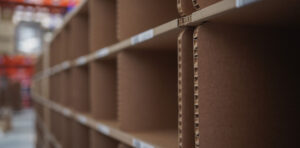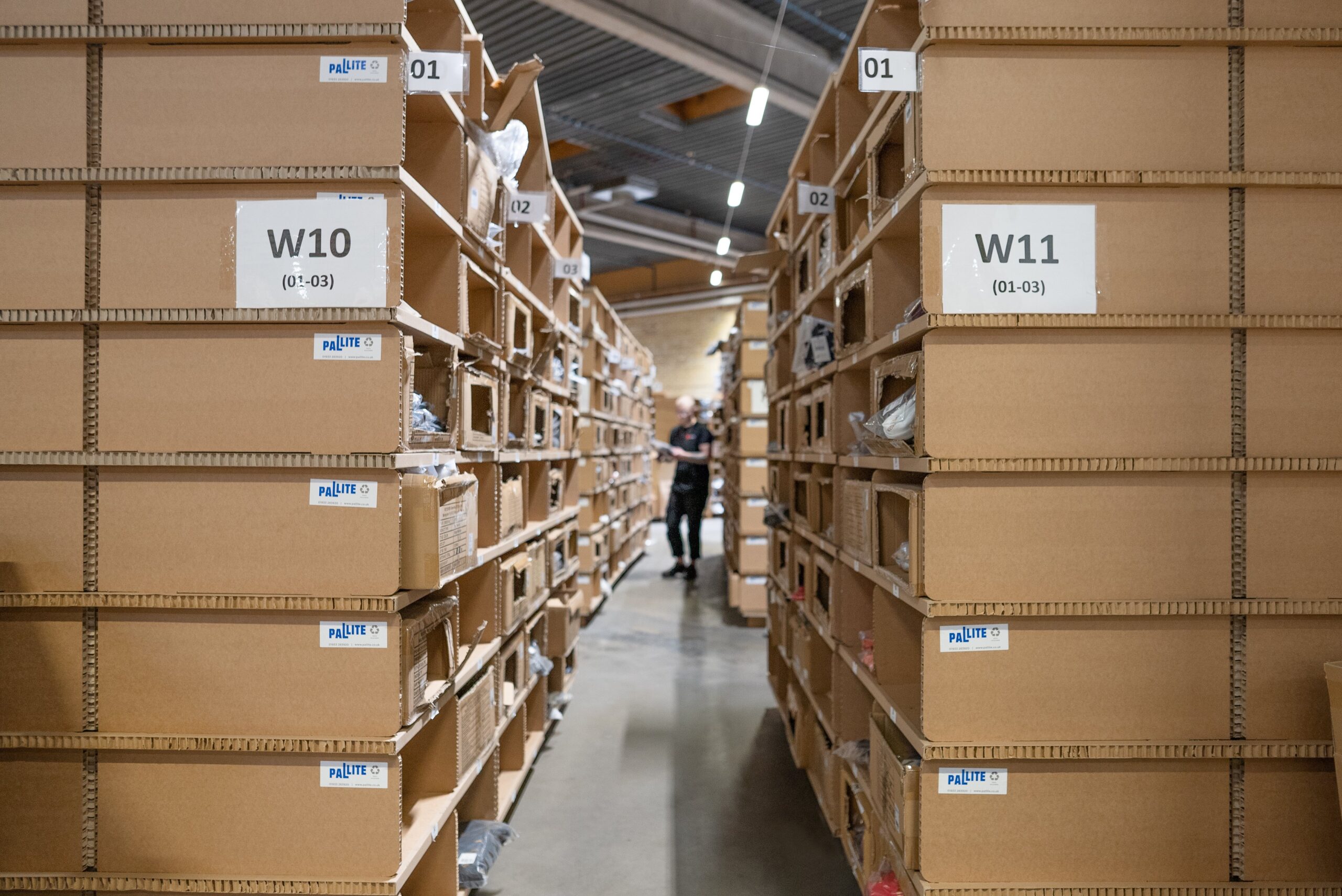Which is better – on-demand warehousing or traditional warehouse storage? In this blog, we take a look at the pros and cons.
On-demand warehousing
‘On-demand warehousing’ is a phrase you might be hearing more and more – but what exactly is on-demand warehousing?
Just as the past few years have seen more and more products and services made available ‘on demand’ – i.e. as soon as or whenever they are required – so too now is warehousing space.
A growing trend, ‘on-demand warehousing’ is the name given to the strategy by which retailers can ‘switch on and off’ warehousing services as required to meet the changing needs of their business. Primarily, on-demand warehousing refers to storage, but it can also relate to returns and rework.
Warehouse operators effectively rent out their storage space and contract out related fulfilment and/or reverse logistics services under short-term agreements that can be put in place quickly to meet customers’ developing needs.
They benefit from being able to maximise their income by maintaining their warehouse storage at as-close-to-full capacity as possible at all times, while customers are able to cater for increased demand for their products without having to make commitments that may not be sustainable in the long term.
On-demand warehousing vs traditional warehouse storage: The pros
Both on-demand and traditional warehousing solutions have their respective benefits. Some of the advantages of each system include:
| On-demand warehousing | Traditional warehousing |
| · Extremely flexible | · Long-term |
| · Reactive | · Fixed capacity |
| · Pay-as-you-go | · You can ‘own’ your space |
| · No long-term commitment | · Cheaper in the long term |
| · Quick and easy to implement | · Non-competitive |
| · Cheaper in the short term | · Stable |
| · Shortened last-mile delivery | · Ability to plan ahead |
| · More environmentally friendly | |
| · Potential for faster order fulfilment |
Traditional warehousing is a legacy from the days of pre-internet era supply chains, when goods were stored in warehouses before being transported to bricks-and-mortar shops to be sold to customers.
If you’ve got the cash to pay up front, the consistency and certainty that comes from owning your own space or committing to a long-term lease can be reassuring for business owners.
On-demand warehousing was conceived to cater for the growth of e-commerce and omni-channel retail, as well as the increasingly uncertain world in which we live.
Retailers benefit from being able to build a dynamic distribution network strategy that can scale in size and capability to match peaks and troughs in demand, as well as in reaction to unforeseen events. Rather than relying on forecasting, they can take a conservative view of how much warehouse space they will need and rent anything additional as and when they need it.
As such, on-demand warehousing may be particularly attractive to businesses that are:
- Expanding rapidly but don’t want to commit to a long-term arrangement they may quickly outgrow
- Wanting to expand into a new market but don’t have the resource to handle sourcing, procurement and set-up for a new fulfilment centre
- Wanting to test new strategies such as trialling new delivery methods and creating short-term product promotions in a low-risk way
- Looking to forward-buy large amounts of inventory to avoid the threat of tariffs or rising costs, and need somewhere to store it in the short term.
What’s more, the ability to use less space across a wider geographic spread of storage facilities allows for shortened last-mile delivery distances, enabling overlap of warehousing and distribution services, leading to faster order fulfilment. Resource-sharing in this way is also more environmentally friendly than building new warehouses that may stand empty or not operate at full capacity.
On-demand warehousing vs traditional warehouse storage: The cons
As well as their many benefits, both on-demand and traditional warehousing systems have their drawbacks, which make them better suited and more appealing to some logistics operations than others.
Traditional warehousing, for example, typically involves a high up-front investment in purchasing or leasing a facility and fitting it out, or in committing to a multi-year contract with a third-party logistics provider. This may require significant investment of time in sourcing the right space for your business, and in implementation.
Change also happens slowly, with growth limited by the extent of your owned network or the space and capabilities of your 3PL.
Then there is the risk that you take on a long-term lease for warehouse space based on sales forecasts, leaving you vulnerable in the event of a sudden increase or drop in demand, as well as to the impact of wider disruptions (coronavirus pandemic anyone!?).
Despite its wide-ranging benefits, on-demand warehousing isn’t to everyone’s tastes.
The lack of commitment and longevity won’t appeal to all business operations, and not everyone needs to pay a higher price for a more flexible service.
There will also, inevitably, be those that prefer the stability that comes with owning their own space – whether outright, or in the form of a long-term lease – and to plan their operations based on the assumption of consistency, rather than change.

PALLITE® PIX®: for all types of warehousing
Whether you opt for traditional warehousing, on-demand warehousing, or a mixture of the two, our PIX® range of warehouse shelving pick faces can help to facilitate fast, accurate picking, speed up order fulfilment, boost the efficiency of your returns service, and increase your overall storage capacity.
Made from our signature honeycomb paper cardboard, PIX® units can be supplied to very short lead times and slot together in minutes without the need for any tools or fixings – making them a quick ‘pop-up’ solution that is equally suited to fixed warehousing operations and dynamic on-demand systems that are subject to frequent change. They can be dismantled quickly and easily if required, and store flat when not in use.
Moveable shelves and compartment dividers allow the units to be configured to bespoke layouts to fit different sized and shaped SKUs, ensuring all your stock is safely secured, carefully separated, and easily identifiable to your picking teams.
Being made entirely from 100% recycled and recyclable paper (with a bit of 100% biodegradable and planet-friendly PVA glue), PIX® units are the sustainable choice for environmentally conscious businesses looking to improve their green credentials.
For more information on how our PIX® range of sustainable warehouse storage solutions could transform your warehouse, give us a call.
